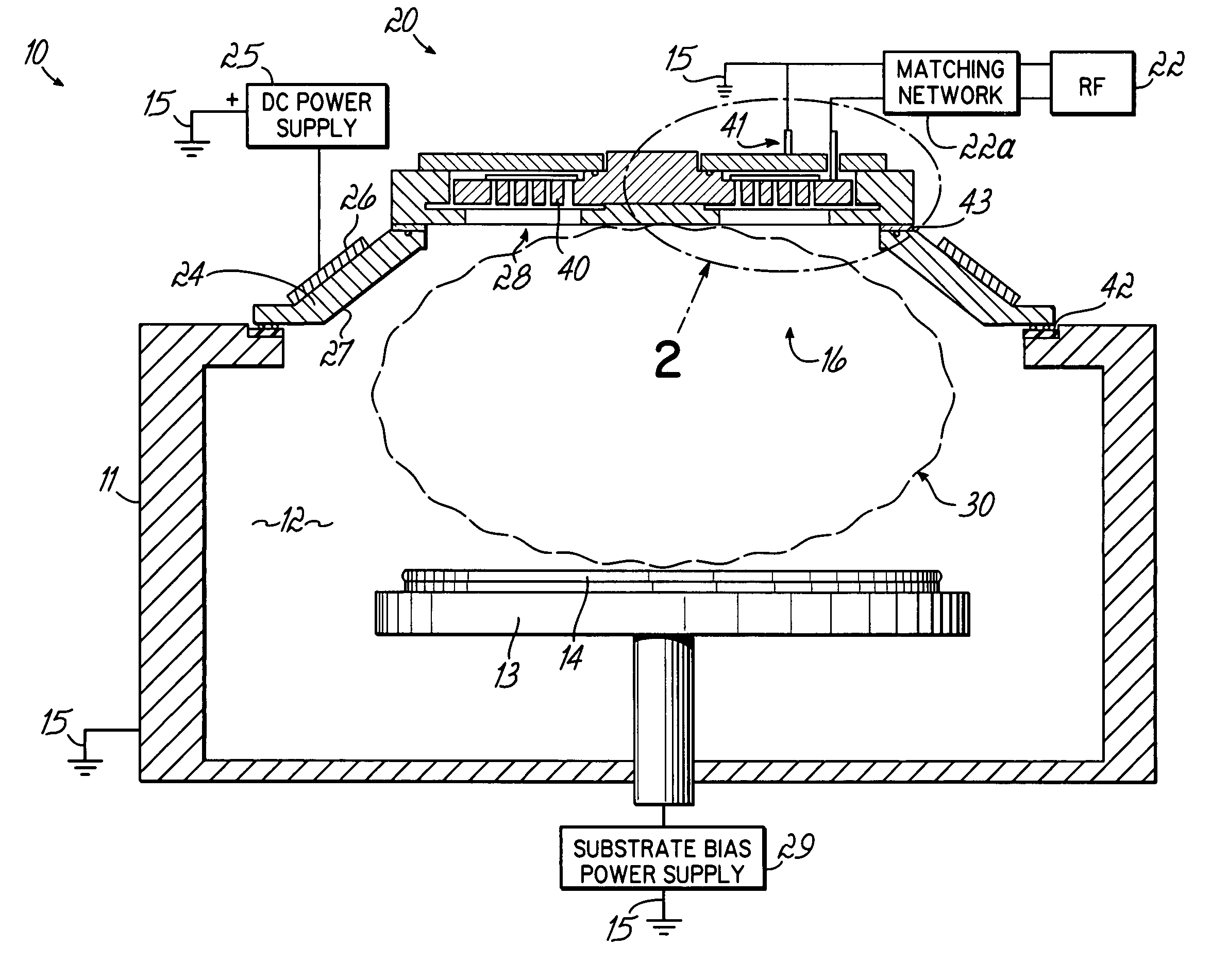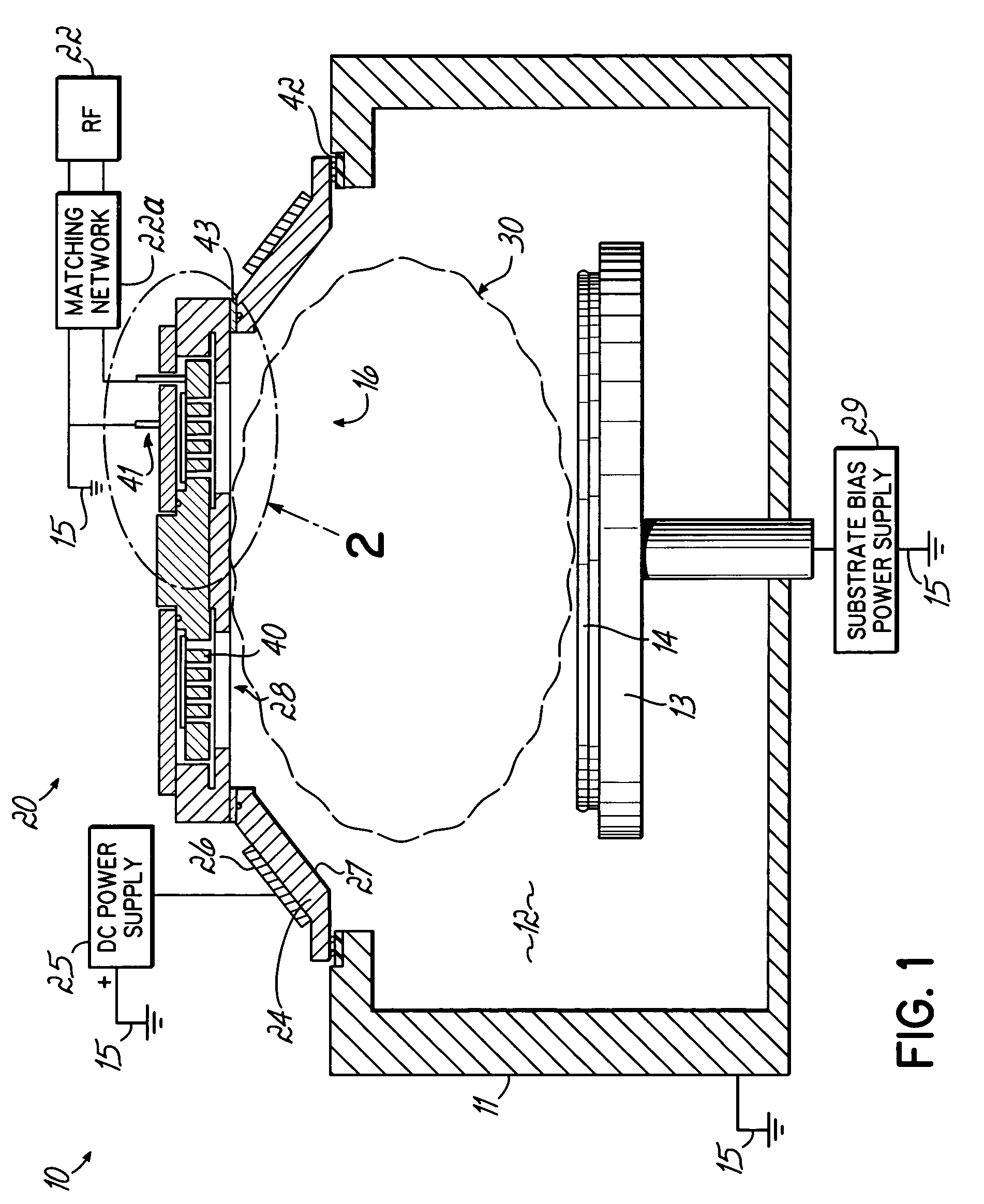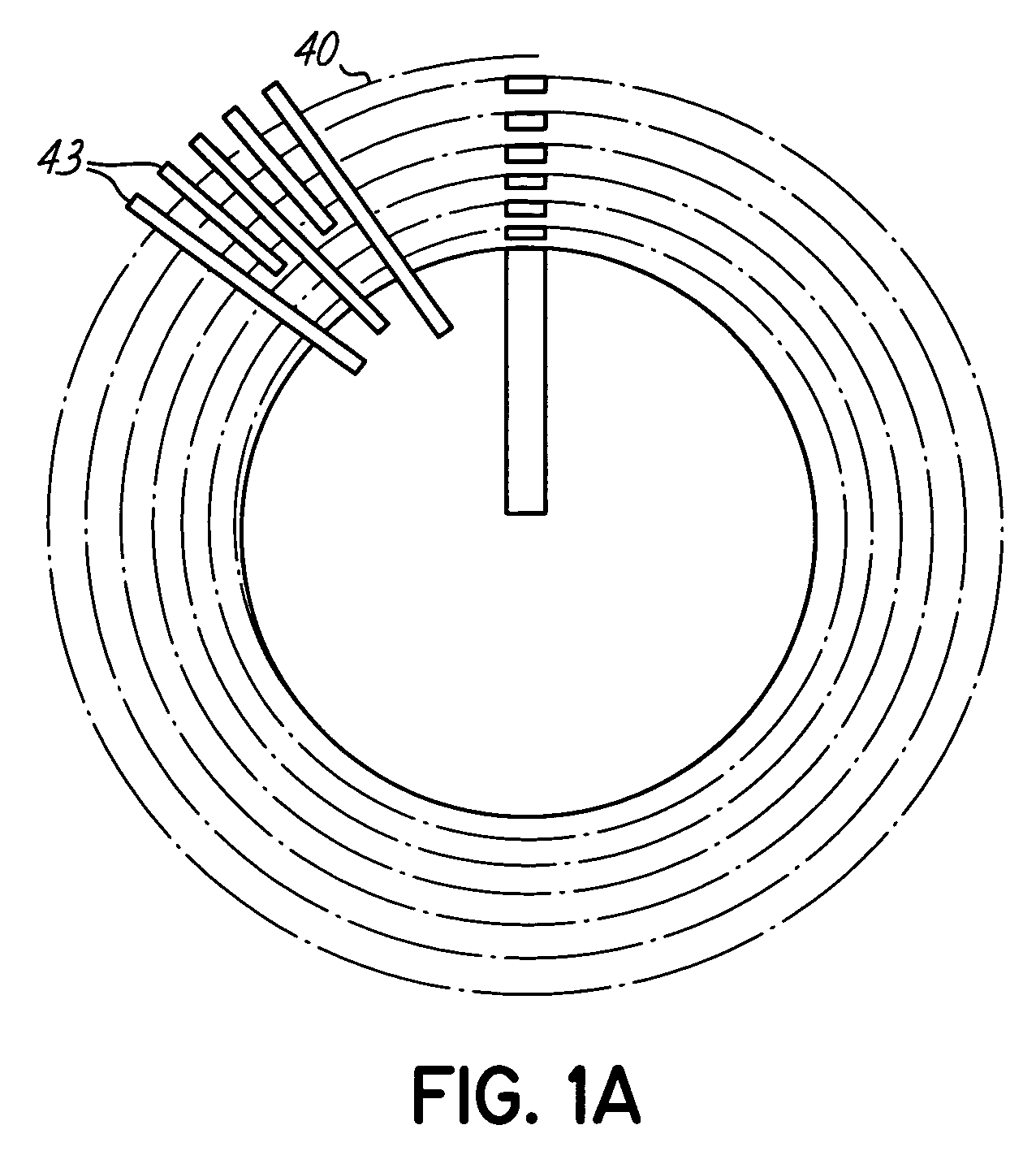Internal antennae for plasma processing with metal plasma
a technology of metal plasma and plasma processing, applied in vacuum evaporation coatings, electrolysis components, coatings, etc., can solve the problems of complicated coil construction, low etch rate, and low etch uniformity, so as to reduce reduce the etch rate. , the effect of reducing the level of metal deposition
- Summary
- Abstract
- Description
- Claims
- Application Information
AI Technical Summary
Benefits of technology
Problems solved by technology
Method used
Image
Examples
Embodiment Construction
[0027]FIG. 1 illustrates an iPVD apparatus 10 of a type described in U.S. Pat. Nos. 6,287,435 and 6,719,886. The apparatus 10 includes a vacuum processing chamber 12 enclosed by a grounded metal chamber wall 11. An upwardly facing wafer support 13 supports a semiconductor wafer 14 in the chamber 12 for processing. In a circular opening 16 in the upper surface of the chamber wall 11, is a coating material source that includes a frusto-conical sputtering target 24 formed of the material, typically a metal, with which surfaces on the wafer 14 are to be coated. A permanent magnet pack 26 lies behind the target 24 and provides a plasma confining static magnetic field over the sputtering surface 27 of the target 24. A DC power source 25 is connected between the target 24 and a system ground 15 to apply a negative DC sputtering potential to the target 24. An RF bias power supply 29 is connected between the substrate support 13 and the system ground 15.
[0028]In an opening 28 at the center o...
PUM
| Property | Measurement | Unit |
|---|---|---|
| bias voltage | aaaaa | aaaaa |
| area | aaaaa | aaaaa |
| frequencies | aaaaa | aaaaa |
Abstract
Description
Claims
Application Information
 Login to View More
Login to View More - R&D
- Intellectual Property
- Life Sciences
- Materials
- Tech Scout
- Unparalleled Data Quality
- Higher Quality Content
- 60% Fewer Hallucinations
Browse by: Latest US Patents, China's latest patents, Technical Efficacy Thesaurus, Application Domain, Technology Topic, Popular Technical Reports.
© 2025 PatSnap. All rights reserved.Legal|Privacy policy|Modern Slavery Act Transparency Statement|Sitemap|About US| Contact US: help@patsnap.com



